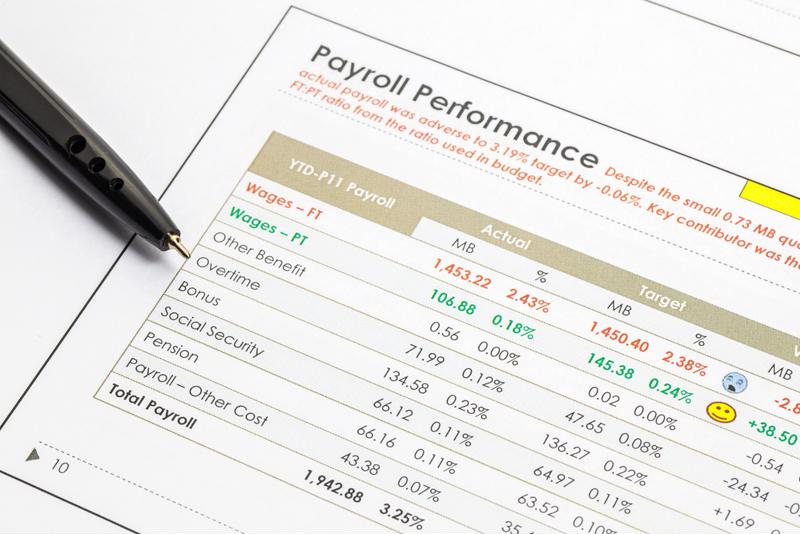
Most (and arguably all) of the businesses that have managed to stay afloat in the modern hyper-competitive environment are able to do so because of their flexibility. This was true before the world-altering emergence of the COVID-19 pandemic, but is, of course, much more the case now and will remain so going forward. Organizations have transitioned their in-office operations to remote structures spread out over their employees’ residences, shifted their sales priorities from brick-and-mortar to e-commerce, altered their marketing to better suit customers who are spending most of their time at home or pivoted in many other ways
But there’s one thing that hasn’t changed (and, in fact, can’t change) even in a year as defined by upheaval and contingent on flexibility as 2020: As an HR manager, you must always do everything you possibly can to optimize employees’ day-to-day experiences and promote staff well-being. That’s precisely why human resource management is important — because while organizations can roll with many punches without being knocked out for good, they’re nothing without the support of the right people.
Let’s take a look at the major factors behind the value of HR and review ways in which your team can make things better for management and employees alike and promote overall business success:
Managing the changing flow of daily operations
Payroll, time-keeping, scheduling, employee benefits administration and safety oversight are all, when considered in vacuums apart from one another, routine processes that every business handles. But that doesn’t mean you can simply go through the motions with any of them. Even a small mistake on a staff schedule, paycheck, paid time off request or health insurance filing can lead to big problems — issues that, while often resolvable or reversible, are at best major inconveniences and at worst significant impediments to acting in employees’ best interests. With so many companies operating in a partially or fully remote capacity, the management of these matters must be fully virtualized, empowered by versatile and scalable end-to-end HR software.

It’s the responsibility of you and your HR team not only to oversee all of the functions detailed above (among others), but also to remain focused on strategically improving them in various ways. As pointed out by the Houston Chronicle, one key aspect of these efforts is conducting research on salary and compensation trends, so that your organization’s pay structure is both competitive within the industry and commensurate with the cost of living in the regions where your employees live.
Along similar lines, you must keep your finger on the pulse of employee benefits, examining which types of health insurance offerings, retirement plans, wellness programs and other perks are most popular. (There will likely be demographic variances here, e.g., millennial and Gen-Z staff members being interested in FSAs and those closer to the baby-boomer end of the spectrum preferring the relative predictability of HMOs or PPOs.) While your department must keep realities like the HR budget in mind when considering new benefits to add to the organization’s offerings portfolio, employee satisfaction must be your biggest priority.
The cost of providing staff with a popular benefit is likely less than the bottom-line losses resulting from turnover when employees dissatisfied with this aspect of their compensation leave for another organization. A 2020 survey by CareerAddict found that 77% of its respondents would factor poor benefits into their decision to quit a particular job.
Oversight of onboarding and development
It’s always wise for companies to do everything in their power to reduce the risk of turnover by offering attractive pay and benefits and implementing strategic measures to galvanize employee engagement. However, no business can prevent turnover entirely — for many reasons, not least of which is the fact that staff leave workplaces they’re satisfied with on a fairly regular basis. As such, there’s always the need for effective onboarding and training programs, and it falls to HR to run those processes.
According to Inc. magazine, this starts with orientation: introducing new hires to the company’s mission and priorities in great detail (beyond what might have been said about the organization during the recruitment phase) while also focusing on what these rookie employees will be specifically responsible for. While their direct supervisors must be involved in this process, they have plenty of other responsibilities to address, so HR professionals will in many ways be running point on initial training.
Your department will also help facilitate continuous learning initiatives that help employees expand their skill sets, which can range from new software solutions to emerging best practices within your industry. Last but not least, it’s on you and your team members to administer any training sessions required by local, state and federal law regarding matters like safety and sexual harassment: The importance of this responsibility cannot be understated, and no one is better equipped to handle it than a dedicated HR management team.

Monitoring (and maintaining) company culture
Organizational culture is just as important as a company’s operational excellence and the quality of that company’s products or services. According to The Balance, while HR doesn’t specifically “own” company culture because it’s a thing every team contributes to, it makes perfect sense for HR to monitor the culture’s status and adjust as necessary to maintain it.
Think of corporate culture as the manifestation of an organization’s values. BuiltHR cited positive relationships between employees as a major sign of a good culture, i.e., the willingness to work together across departments to ensure a project’s completion. Participation in company-sponsored social events is another strong indicator, as it means staffers want to enjoy one another’s company outside the office. These and other signs should ultimately show themselves in the quality of the work each team member does.
Proper culture maintenance depends not only on HR’s commitment to that priority but also your department’s solicitation of employee feedback and ability to set and meet realistic improvement goals. Holding at least one company outing every few months, for example — either virtually or, once it’s safe to do so, in person — is a solid benchmark to shoot for. Another would be the establishment of an employee reward and recognition program. The specifics aren’t important; what matters is a clear commitment to organizational excellence.
